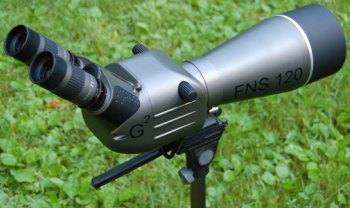Cosme
Well-known member
Has anyone tried it? looks good!

- Scope length without binocular unit and lenses – 18 inches
- Scope length with binocular unit and 25mm lenses – 22 inches
- Total weight of lenses, scope and case – 18 pounds
- 120mm (4.7 inch) objective lens
- Field of view 20x 155 feet at 1000 yards, 30x 110 feet at 1000 yards
- Telescoping sunshade and quick detach front lens cover
- Ambidexterous Focusing knobs
- Fitted hard case (20 ⅛ x 8 ⅛ x 11 ½) with inner soft case
http://www.tactical-life.com/gear/the-fns-120-binocular-spotter-scope/
http://bulletin.accurateshooter.com/2008/07/new-binocular-spotting-scope/

- Scope length without binocular unit and lenses – 18 inches
- Scope length with binocular unit and 25mm lenses – 22 inches
- Total weight of lenses, scope and case – 18 pounds
- 120mm (4.7 inch) objective lens
- Field of view 20x 155 feet at 1000 yards, 30x 110 feet at 1000 yards
- Telescoping sunshade and quick detach front lens cover
- Ambidexterous Focusing knobs
- Fitted hard case (20 ⅛ x 8 ⅛ x 11 ½) with inner soft case
http://www.tactical-life.com/gear/the-fns-120-binocular-spotter-scope/
http://bulletin.accurateshooter.com/2008/07/new-binocular-spotting-scope/



